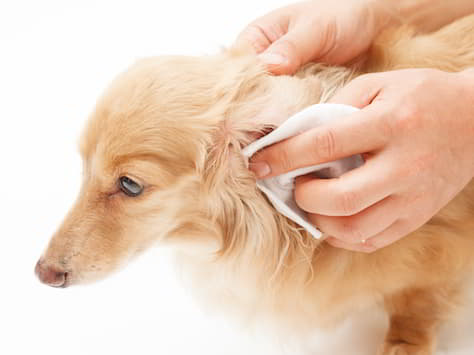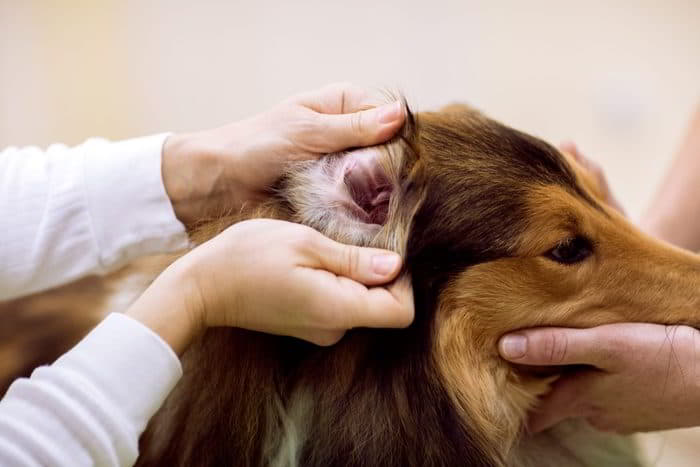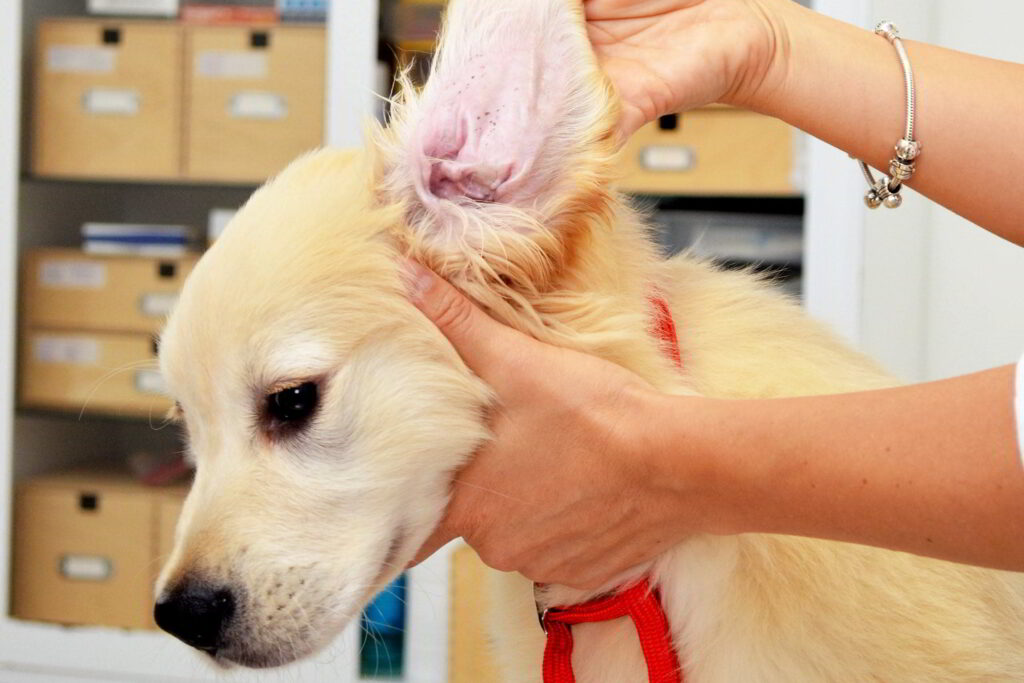How to Cope with Contagious Pests
Ear mites are extremely contagious, and puppies often catch them from their mother. Because all stages other than the eggs feed on your puppy’s ears, it’ll show signs of itching and pain for the entire life cycle. If one pet has ear mites, all animals in contact with that pet must be treated to prevent reinfestation. When left untreated, ear mites can cause middle and inner ear infections which can damage hearing or influence balance.
What Are Ear Mites?
Ear mites, or Otodectes cynotis, are a type of arthropod that resemble ticks. They colonize a puppy’s ear, where they feed on cellular debris, ear wax, oils, and lymph fluid from beneath skin. Just three or four adult mites in the ear can cause considerable discomfort. Imagine being continually bitten by a tiny mosquito inside your own ear canal and you’ll understand how aggravating this condition can be for your puppy.

Signs of Ear Mites in Puppies and Dogs
Ear mites cause ear inflammation, or otitis. You’ll see brown/black crumbly debris in the hearing canal and/or crust formation. The discharge looks like coffee grounds. Mites result in intense itching and puppies typically constantly shake their heads, scratch their ears, rub their heads against the floor or furniture, and may vocalize in pain.
Trauma from the pup’s efforts to relieve the itch can bruise the ear flap (pinna). Vigorous scratching and head shaking, especially in breeds with pendulous ear canals such as beagles and basset hounds, could cause an aural hematoma, where the pinna swells with blood.
The presence of characteristic dark ear debris and constant scratching raise suspicion for a diagnosis of mites. Your veterinarian should confirm the diagnosis by finding the mite in a sample of ear debris that’s examined under the microscope. The parasite is tiny, white and nearly impossible to see with the naked eye. Never treat your puppy for ear mites until the diagnosis is confirmed or you risk masking other ear problems and/or complicating their proper medical diagnosis and treatment.

Causes of Ear Mites
Ear mites are often passed from animal to animal. Cats commonly pass the mites to dogs that live in the same home.
The mite life cycle takes three weeks. First, adult mites lay eggs within the ear canal. Eggs incubate for four days, then hatch into six-legged larvae which feed for another three to 10 days.
The larvae develop into eight-legged protonymphs which molt into the deutonymph stage. At this point, the immature deutonymph attaches itself to a mature male ear mite using suckers on the rear legs. If the deutonymph becomes a feman adult, fertilization occurs and the female lays eggs. The cycle repeats itself over and over until treatment is successful.
Even the adult stage of ear mite is so tiny that it’s difficult to see. Ear mites also affect cats, rabbits, ferrets, and other pets.
Treatment
Your puppy’s ears can be so sore they won’t let you or the vet touch them. In that case, the veterinarian will need to sedate your pup before treating it. Follow-up treatment at home is usually recommended.
Once you get a diagnosis of ear mites from the vet, you may treat ear mites at home. This involves cleaning the ears and/or treating with a liquid at least twice a week for three weeks or more. Otherwise, the ear mite eggs left behind in the hearing canal will hatch and start the process all over again. Commercial products are available for treating ear mites; ask your veterinarian for a recommendation.
Some pets cannot be successfully treated at home. In certain instances, an injectable medication may be recommended. Some of the monthly heartworm and flea prevention treatments also prevent ear mites.
Ear mites sometimes travel outside of the ear to other parts of the puppy’s body. The resulting sores may resemble an allergy to flea bites. This condition is called otodectic mange. When your pup is diagnosed with ear mites, don’t neglect the rest of its body. Flea products also kill ear mites, so choose an appropriate product and do whole-body treatments along with ear treatments.

Ear mites can survive in the environment for several months, and premise control is helpful, particularly in homes with many pets. Follow the same procedures and use the same products for premise control of fleas to get rid of ear mites in the environment. Treat your house and yard for at least four weeks; It is, however, achievable to limit the problem.
How to Prevent Ear Mites
It’s not really possible to prevent ear mites altogether, as they are present in the outdoor environment. experts suggest treating the environment two weeks beyond the pet’s apparent cure. Two simple techniques for minimizing the impact of ear mites are a regular monthly ear cleaning for your dog and a trip to the vet if you’re observing unusual scratching or discomfort. If your pet is recovering from a bout of ear mites, be sure to thoroughly clean its bedding and check any other pets for possible infestation.
